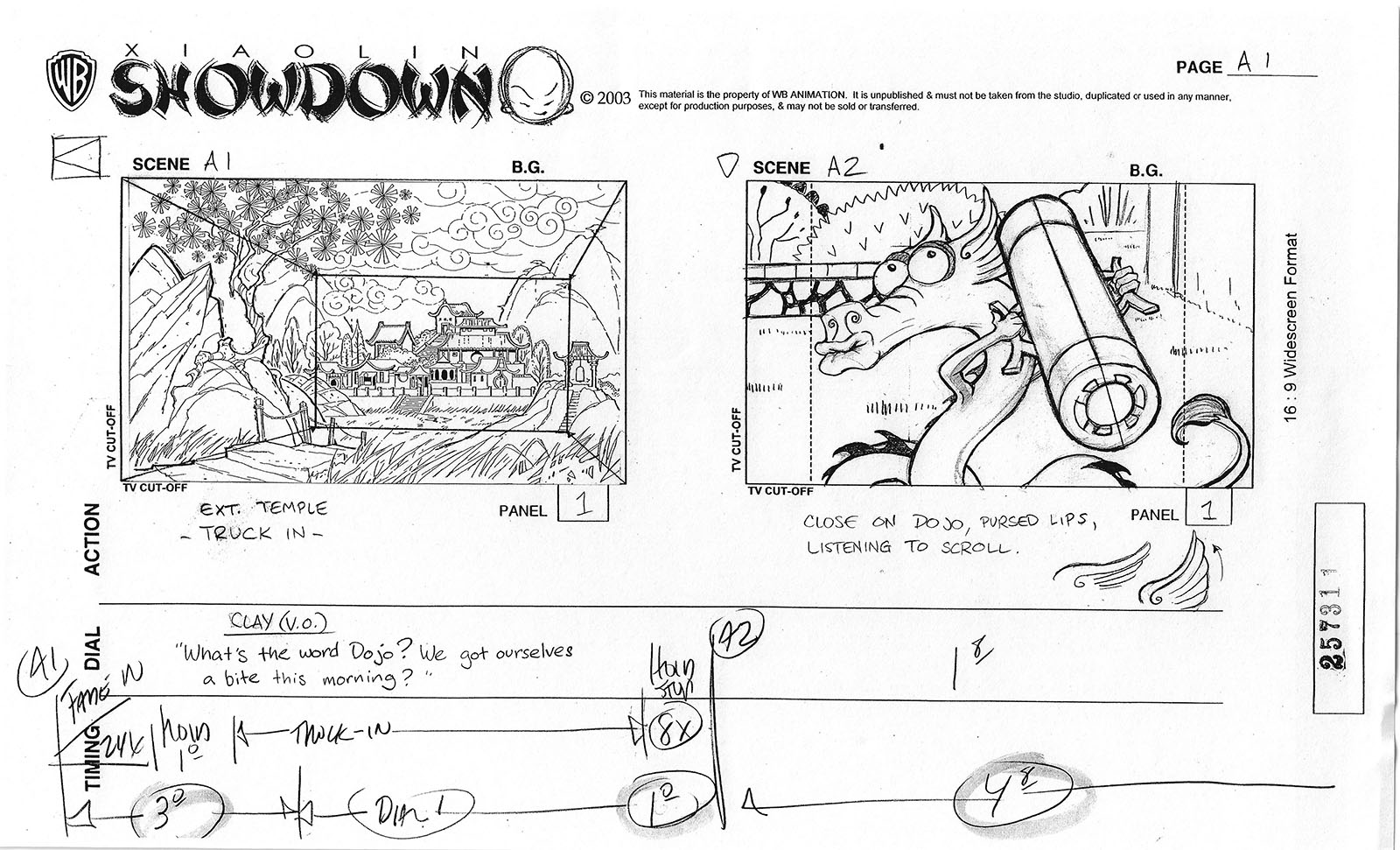Xiaolin Showdown Episode 11, 2004
Royal Rumble was the title of my fourth episode in season 1 of Xiaolin Showdown. It’s also a good descriptor for the process of directing it. This turned out to be the last episode I directed, though I was still heavily involved in the show for its subsequent seasons. Why? Because there were some lessons I hadn’t learned yet.
My articles on the three preceding episodes set the stage; my assistant Jeff Allen and I came on board at the beginning of this new, original cartoon series for Warner Brothers. It was a rare opportunity to help shape it as we went along, and we jumped in with all our creative might. Over our first three episodes, we did some of the best work of our careers up to that point. Our storyboarding, our visual gags, and even our art got better week by week. It was incredibly satisfying and a huge boost to our confidence.
When I got the script for our fourth episode, it was a perfect culmination: a four-way battle between good guys and bad guys in multiple locations. The story shifted quickly back and forth between them, calling for some innovative filmmaking. Jeff knocked it out of the park with one brilliant transition after another. It was a true “yes-and” collaboration, both of us finding ways to build on each others’ work and make it better.
Our enthusiasm for the episode reached a new level when we dug into the script itself and came up with more gags. Since they would require additional dialogue, I pitched them first to our Producer Eric Radomski and he consented to let me pitch them to the script editor. He recognized the spirit of our contribution and thanked me for the effort.
If I’d been a more experienced director at that point, I might have recognized this as a tactical error. Because it was one. And not my only one.
My error was in assuming everyone else saw this episode the same way I did: something extra special with a lot of opportunities to excel. The storyboard was packed full of instructions for how to add extra flair to the animation. The new gags I pitched would have given the story some extra laughs. I wanted the character designs to have a little extra edge. The word kept flashing over my head: extra, extra, extra. If I kept pushing the limits, everyone else would surely see how truly great this episode could be.
But those above me were responsible for the bigger picture, and in their eyes, this was one episode out of 13. When you’re in charge of a series, it’s vitally important to spread the finite resources evenly, so each episode can at least hit its minimum requirements. If you load one episode up with extras, it will drain something from the others. That turns it into a problem nobody needs.
As reality set in and the compromises started coming down, I didn’t take it well. All the extra gags were declined. A lot of elaborate scenes were simplified. None of the character designs were adjusted. Like it or not, this had to be a “normal” episode, given no special favor over the others. I had pushed too hard. As a result, this was to be the last episode I directed.
I get it now, after having worked on many other shows for Eric Radomski and others. Nearly ten years went by before he was ready to put me in a director’s chair again (at Marvel). I wasn’t grateful for the lesson at the time, but it served me well over subsequent years. Some things you just have to learn the hard way.
On the other hand, even though I didn’t get the “extras” I wanted, we still turned out a slam-bang episode and I still have a copy of the storyboard in its pre-compromised state. (Which even includes a magnificent Easter Egg in Act C that got cut.)
There’s a lot more to be said about my time on Xiaolin Showdown, but for now I present to you…
Episode 11: Royal Rumble

Act A Storyboard

Act B Storyboard







